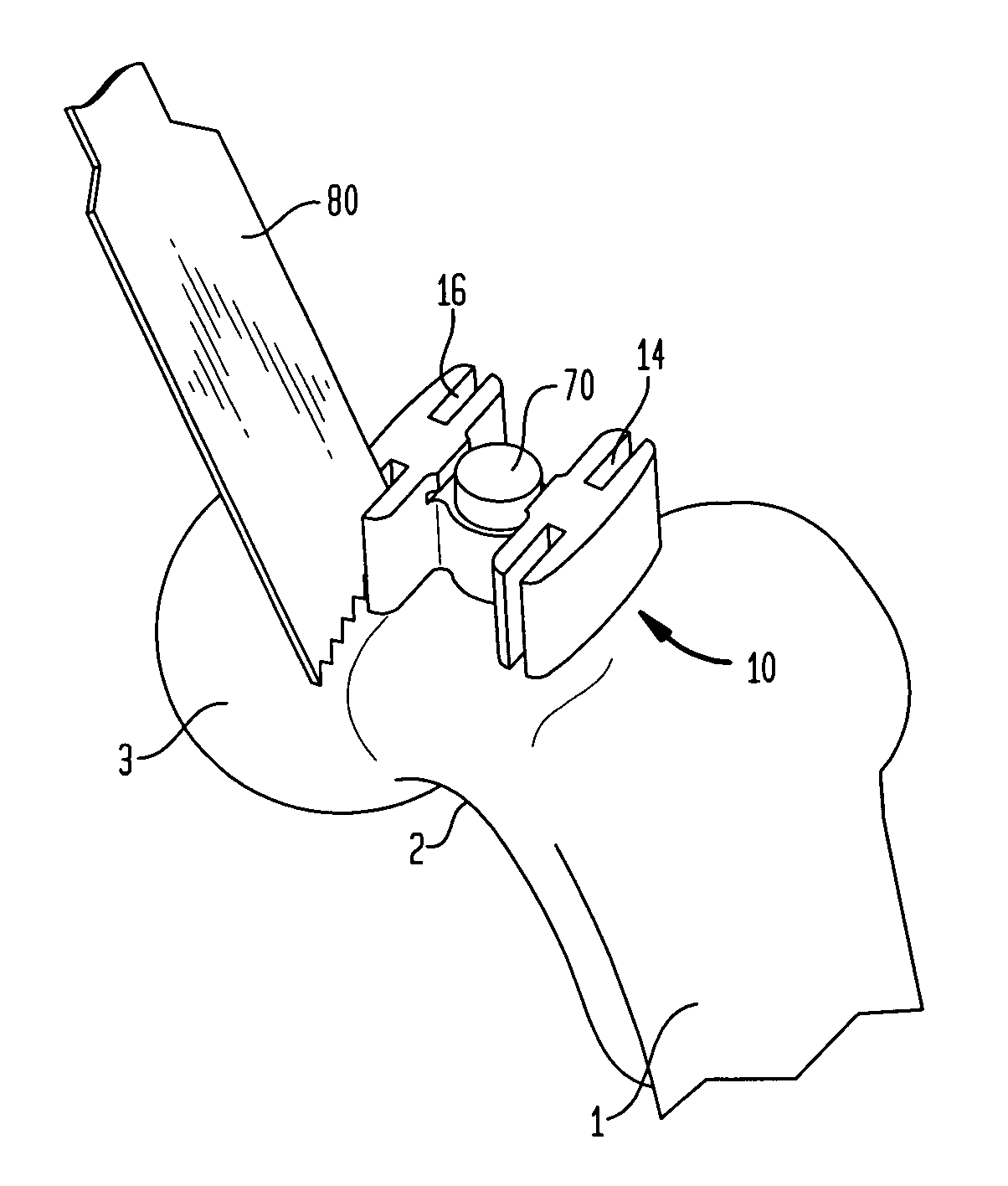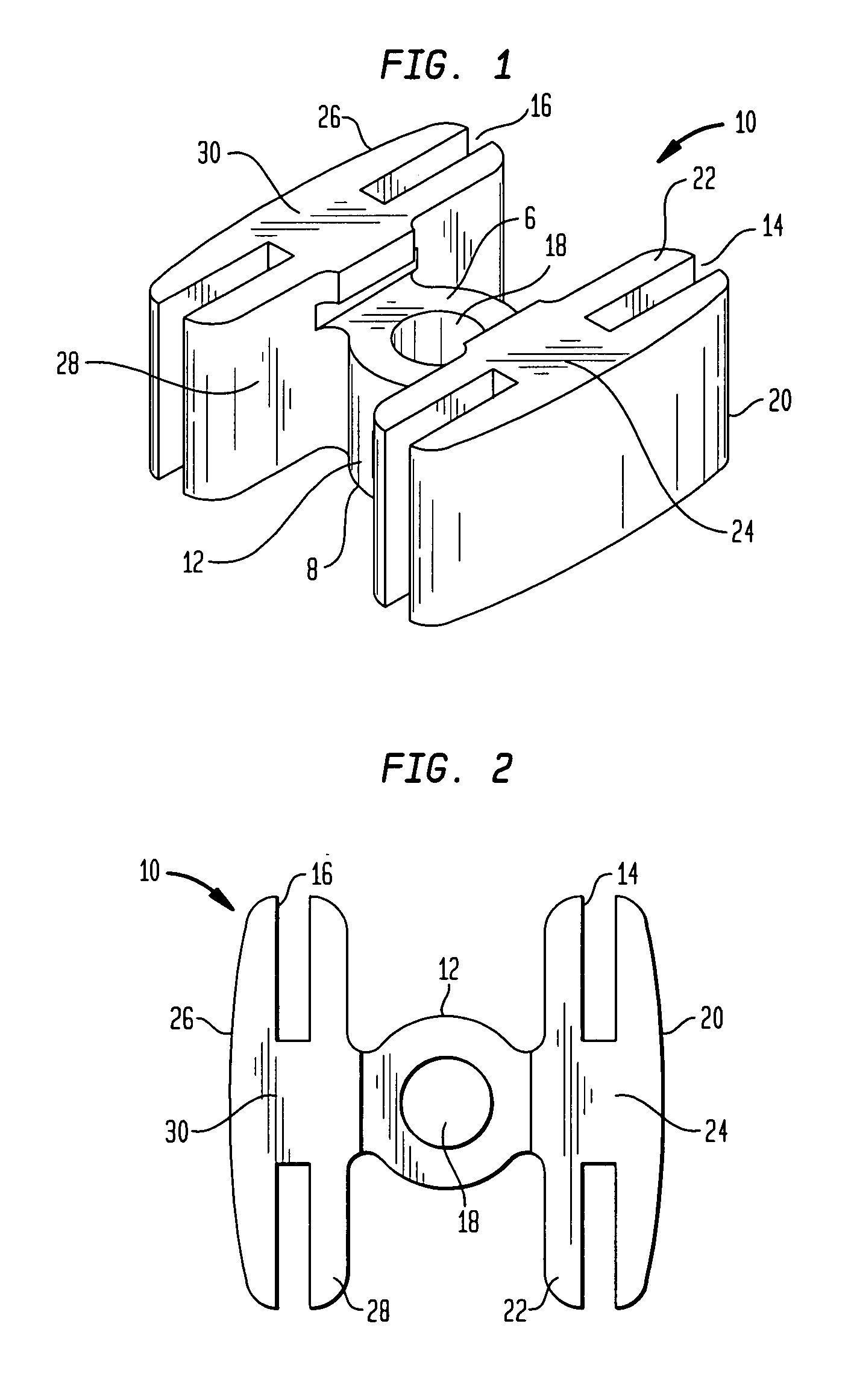Navigated femoral neck resection guide and method
a femoral neck and guide technology, applied in the field of orthopedic cutting blocks, can solve the problems of significant hurdles for surgeons, methods and requirements, and significant difficulties in performing in situ femoral neck resections, and achieve the effect of preventing the rotation of the bushing
- Summary
- Abstract
- Description
- Claims
- Application Information
AI Technical Summary
Benefits of technology
Problems solved by technology
Method used
Image
Examples
second embodiment
[0057]As is also best shown in FIG. 16, first cutting slot 114 is preferably formed by an exterior wall 120 and an interior wall 122, and second cutting slot 116 is preferably formed by an exterior wall 126 and an interior wall 128. However, unlike that shown with regard to guide 10, the exterior and interior walls of slots 114 and 116 are connected together on their respective ends to form a closed cutting slot. Although this is different than the open ended cutting slots described above, it is noted that this is merely another mode of forming a slot, and the open ended mode may also be employed in this Preferably, closed slots 114 and 116 are sized and configured to allow a standard cutting blade or the like to be manipulated therein. This may include the angling and translation of such a cutting instrument, along with other needed movements. It is noted that the closed nature of the slots may aid in the inadvertent slipping of such a cutting instrument, which may, in turn, preve...
first embodiment
[0058]In addition, as is the case in the first embodiment guide 10, guide 110 includes ledges 132 and 136 for use during extraction / removal of the guide. Specifically, ledge 132 is formed at or near the connection between first cutting slot 114 and body 112, and ledge 136 is formed at or near the connection between second cutting slot 116 and body 112. Ledge 132 preferably hangs over body 112 to form a groove 134 and ledge 136 preferably hangs over body 112 to form a groove 138. Ledges 132, 136 and grooves 134, 138 are typically utilized in a similar fashion as the ledges and grooves of guide 10, as is discussed more fully above. Namely, such elements preferably aid in the extraction / removal of guide 110 subsequent to the resection of femoral neck 2.
[0059]FIG. 17 depicts a fastener element 170 for use in attaching / connecting or otherwise fixing resection guide 110 to the femoral neck or other bone. Essentially, element 170 is a bone screw having a tapered head 172, a threaded portio...
PUM
 Login to View More
Login to View More Abstract
Description
Claims
Application Information
 Login to View More
Login to View More - R&D
- Intellectual Property
- Life Sciences
- Materials
- Tech Scout
- Unparalleled Data Quality
- Higher Quality Content
- 60% Fewer Hallucinations
Browse by: Latest US Patents, China's latest patents, Technical Efficacy Thesaurus, Application Domain, Technology Topic, Popular Technical Reports.
© 2025 PatSnap. All rights reserved.Legal|Privacy policy|Modern Slavery Act Transparency Statement|Sitemap|About US| Contact US: help@patsnap.com



